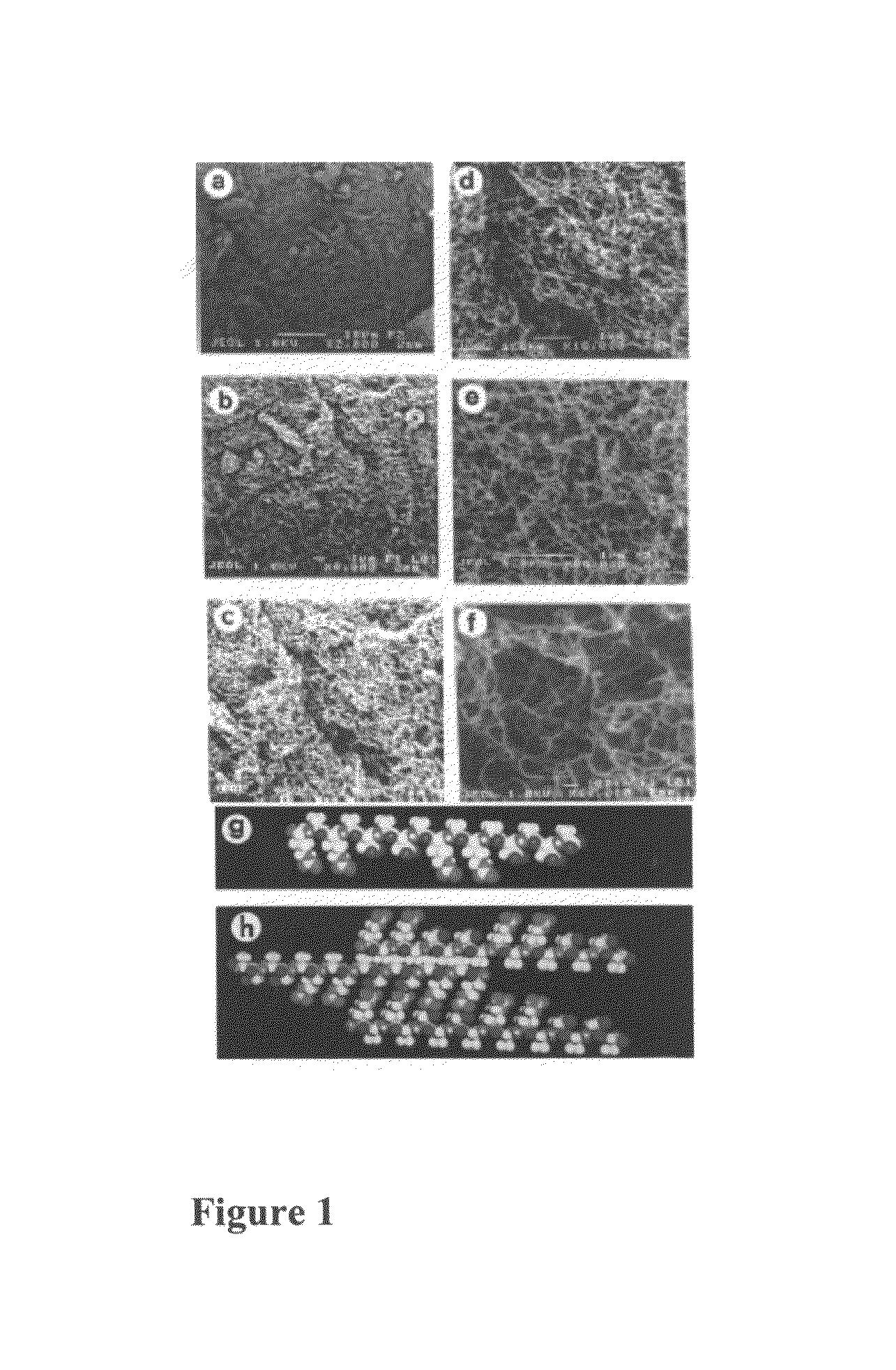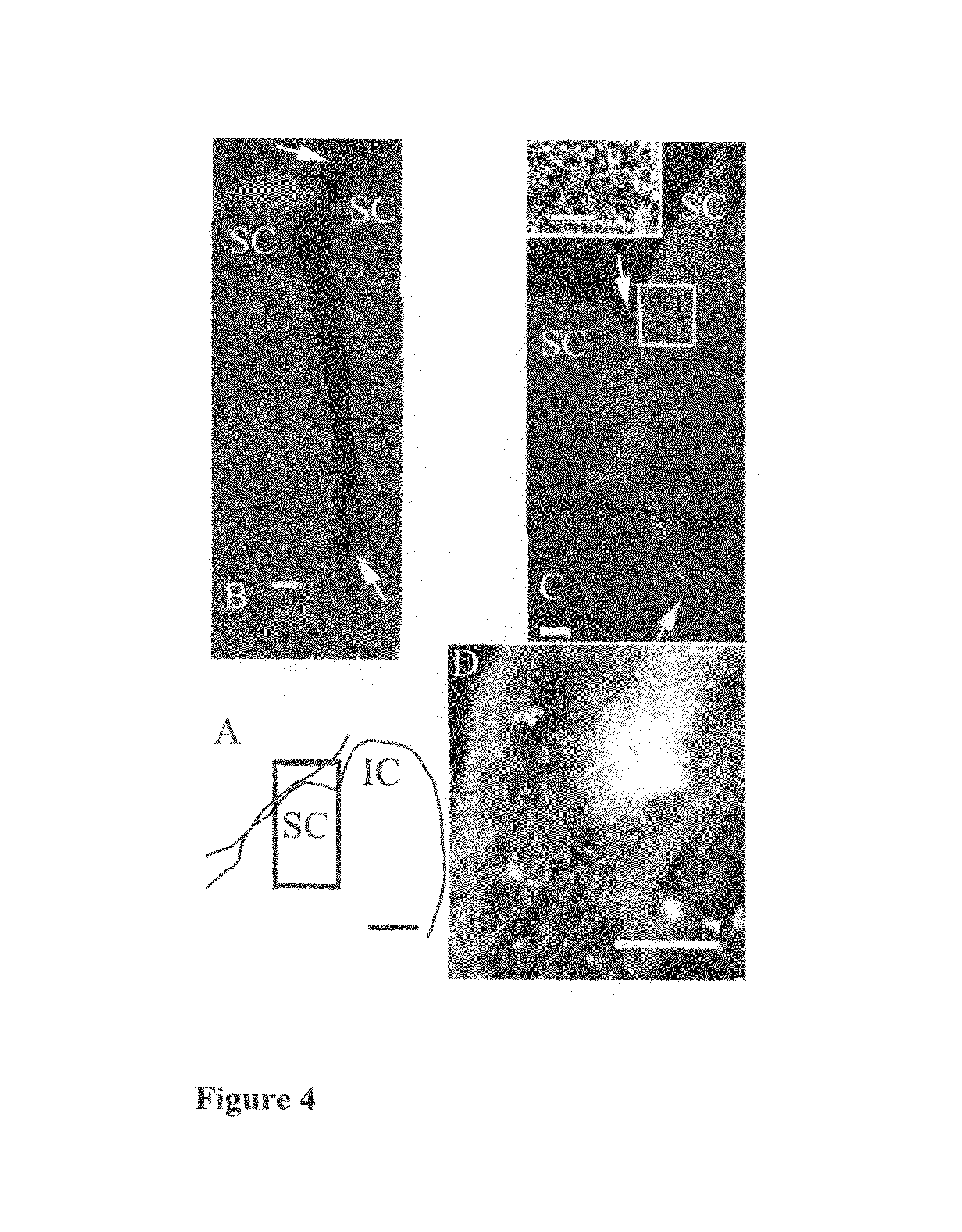Self-assembling peptides for regeneration and repair of neural tissue
a neural tissue and peptide technology, applied in the direction of drugs, prostheses, metabolic disorders, etc., can solve the problems of insufficient nerve repair, limited extent to which normal function is regained, and 80% of functional recovery rate, and the additional disadvantage of two surgeries
- Summary
- Abstract
- Description
- Claims
- Application Information
AI Technical Summary
Benefits of technology
Problems solved by technology
Method used
Image
Examples
example 1
SAP Peptide Scaffolds Support Neural Tissue Regeneration In Vivo
[0138]Materials and Methods
[0139]Animals and surgery. Syrian hamster pups at two days of age (P2) were anesthetized with whole-body cooling. The scalp was opened and the optic tract within the superior colliculus (SC) was completely severed with a deep knife wound through a slot cut in the cartilaginous skull, extending 1-2 mm below the surface from the midline to a point beyond the lateral margin of the SC. At surgery, 10 animals were treated by injection into the brain wound of 10 microliters of 1% SAP RADA16-I (n-RADARADARADARADA-c; SEQ ID NO: 1) prepared by dissolving peptide in sterile water. The overlying scalp was then closed with tissue glue (cyanoacrylic). The pups were returned to the cage, placed under a heat lamp, and monitored until they recovered. After recovery the hamster pups were returned to their mother. Control animals with the same lesion included 3 with isotonic saline injection (10 microliters), a...
example 2
Introduction of a SAP at a Site of Injury Promotes Anatomic and Functional Recovery in Adult Hamsters
[0149]We have previously demonstrated success using peripheral nerve autografts to bridge sites of transection of the optic tract, as assessed by behavioral recovery as well as by neuroanatomical tracing of the retinal projections [18]. Syrian hamsters are a good animal for such experiments because they become blind in tests of visually elicited head turning after complete severance of the brachium of the superior colliculus (BSC). Thus functional recovery of severed axons can be assessed by evaluating visually elicited head turning at various times after infliction of a lesion that severs the brachium, such as those described in Example 1.
[0150]To determine the extent of return of vision the animals are tested for visually elicited orienting responses [3, 51]. The identity of the animal is unknown to the investigator during testing periods. Before behavioral testing, the animals are...
PUM
| Property | Measurement | Unit |
|---|---|---|
| concentration | aaaaa | aaaaa |
| concentration | aaaaa | aaaaa |
| concentration | aaaaa | aaaaa |
Abstract
Description
Claims
Application Information
 Login to View More
Login to View More - R&D
- Intellectual Property
- Life Sciences
- Materials
- Tech Scout
- Unparalleled Data Quality
- Higher Quality Content
- 60% Fewer Hallucinations
Browse by: Latest US Patents, China's latest patents, Technical Efficacy Thesaurus, Application Domain, Technology Topic, Popular Technical Reports.
© 2025 PatSnap. All rights reserved.Legal|Privacy policy|Modern Slavery Act Transparency Statement|Sitemap|About US| Contact US: help@patsnap.com



